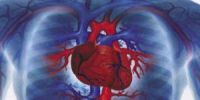Article
Which Patients Benefit from Cardiac Resynchronization Therapy?
Author(s):
New research explains why up to half of heart failure patients do not respond to cardiac resynchronization therapy (CRT) and how physicians can determine which patients would benefit from CRT.

Up to half of heart failure (HF) patients do not respond to cardiac resynchronization therapy (CRT), and new research from the University of Virginia (UVA) Health System explains why HR patients either do or do not respond. Furthermore, the research identified which patients would benefit from CRT, allowing physicians to create a map of a patient’s heart to guide the installation of a CRT pacemaker-defibrillator for the best outcome.
UVA researchers, led by Kenneth C. Bilchick, MD, said many of the patients in whom CRT fails have cardiac dysfunction from previous heart attacks. While heart attacks leave focal areas of the heart muscle scarred, other causes of HF typically produce damage more diffuse. Whatever the cause, the damage prevents the heart from contracting and relaxing in a smooth, well-timed manner.
“The end result is that there is blood sloshing around from one side to the other inside the heart instead of getting pumped out of the aorta efficiently to the rest of the body,” Bilchick said in a statement.
For optimal CRT results, he said, the wires of the pacemaker-defibrillator must be placed strategically to avoid the scar tissue and stimulate the areas that most need stimulation. The UVA researchers sought to create an effective model to determine how wire placement and other factors would influence outcomes after CRT. They built a model to incorporate several factors, including a parameter called CURE, which assesses the discoordination of the heart and is determined from advanced MRI imaging methods developed at UVA.
UVA’s model produces a comprehensive assessment of the heart, identifying scarred areas, sluggish areas, and areas with weak electrical impulses, providing a roadmap for how best to implant the CRT pacemaker-defibrillator.
Bilchick and colleagues’ study tested their model based on medical imaging of patients referred for CRT, and found that the model was successful at predicting outcomes. Next, they plan to test the model in candidates for CRT, using it to chart the best course of treatment.
The findings were published online by the Journal of the American College of Cardiology.





